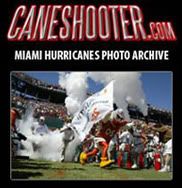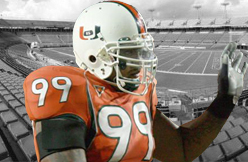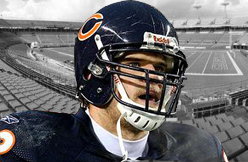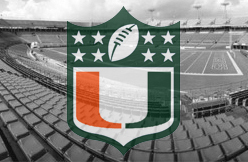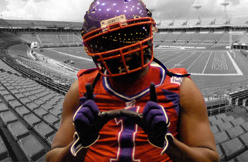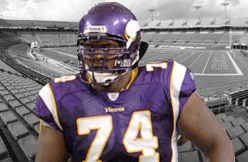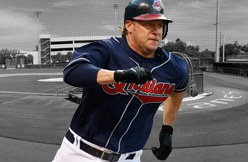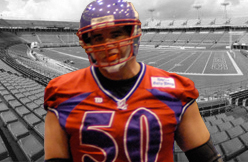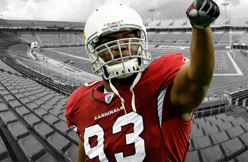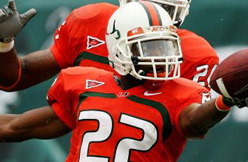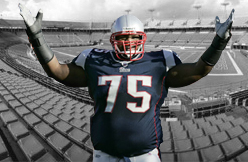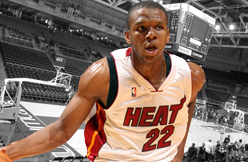The streak lasted so long that during its span, Warren Sapp crafted a Hall of Fame-caliber professional career, retired, finished a season on “Dancing With the Stars” and began a second career as an analyst on the NFL Network.
It wound through so many generations of football players that Sapp stumps people with a trivia question: who was the highest-drafted University of Miami player the year before the streak started? (Running back Donnell Bennett, second round in 1994, by Kansas City.)
The streak has hung on for so many years that when Sapp spoke to Kenny Phillips, who saved the streak when the Giants chose him with the final pick in the first round last year, he welcomed him to an extraordinary Hurricanes club.
“I said, ‘Way to keep the streak going,’ ” Sapp recalled recently. “It’s a common bond with someone who is 13 years removed from me.”
Sapp and Phillips are the bookends of a singular period of Miami football dominance: at least one Hurricanes player has been selected in the first round in 14 consecutive N.F.L. drafts. But Miami’s fortunes on the recruiting trail and the football field have suffered in recent years — no national championships since the 2001 season, and a losing season in 2007.
Even if Miami’s absence from college football’s loftiest ranks is just temporary, as most recruiting experts and N.F.L. personnel executives believe, it will take its toll this month. The streak — and one of the Hurricanes’ favorite trash-talk fodder — will almost surely end. When the college draft begins April 25, cornerback Bruce Johnson could be the only Hurricane drafted, and probably not before the fourth round. Years of the draft being colored in orange and green will fade to black.
“My streak ends,” Sapp said, sighing. “It’s something we took immense pride in.”
Still, with the dispersal of talent to more colleges than ever — players from football lesser lights like Troy (Leodis McKelvin), Delaware (Joe Flacco) and Tennessee State (Dominique Rodgers-Cromartie) were selected in the first round last year — Sapp may not have to worry about Miami’s record being matched. Elias Sports Bureau found Louisiana State has the next-longest current streak of first-rounders (five). Recruiting powers like Southern California (one) and Florida (two) are well off Miami’s pace.
And it is unlikely that any program will touch Miami’s mind-boggling run early this decade, when it had four first-rounders in 2001, five in 2002, four in 2003 and an N.F.L.-record six in 2004.
Miami nearly scuttled football in the 1970s, and it still fails to sell out games against anybody but its biggest rivals. But Howard Schnellenberger, the coach who revived the program in the 1980s, laid the groundwork for the streak by eschewing most out-of-state recruiting and mining talent-rich South and Central Florida.
From those areas came Michael Irvin, Bennie Blades, Jerome Brown, Ray Lewis, Phillips and Sapp. All were first-rounders. Schnellenberger started a slogan: “Pipeline to the pros.”
“We caught all kinds of flak,” Schnellenberger, now the coach at Florida Atlantic, said. “The university hierarchy thought it was guff because it was emphasizing pro football as an end to the means.”
Without the lavish facilities and tradition of Texas and Michigan, Schnellenberger encouraged a culture that emphasized college and regional pride, binding the players to the campus and to one another. Its most obvious manifestation is that players, even deep into their pro careers, still return to Coral Gables to work out in the off-season.
With one coach after another leaving for pro jobs (Schnellenberger, Jimmy Johnson, Dennis Erickson and Butch Davis), those players provided continuity at Miami, filling, Schnellenberger said, the institutional role that coaches like Joe Paterno and Bobby Bowden do at Penn State and Florida State.
The pros provided a powerful recruiting pitch on national television when they stood on the sideline at Miami games. And once the prospects came to Miami, the pros helped prepare them for their next step. When Sapp was there, Russell Maryland and Brown showed up. When Phillips was a freshman, he worked out with safety Ed Reed and running back Edgerrin James, both first-rounders.
When Ernie Accorsi, the former general manager of the Giants, visited the campus, Alonzo Highsmith, Micheal Barrow and Jessie Armstead were working out with Miami players.
“They give you tips — they teach you how to watch film,” Phillips said. “It does a lot for a guy who is 18 years old. My junior year, Ed said: ‘The way is paved for you. All you have to do is play.’ ”
Sapp and Phillips credit the influence of former Hurricanes for fostering sustained excellence.
“We were not going to bend those standards,” Sapp said.
Accorsi saw the not-so-subtle pressure up close when he went to campus to “box” the players (teams used a battery-powered reaction box to test quickness, explosion and change of direction). It was so hot that the dry-cell battery melted. Two players found a store that sold the hard-to-find battery. The test was on.
“They were going to make sure we were able to test them, a test players generally would duck, but not them,” Accorsi said. “Then they competed against each other like it was an Olympic trial. All the players put pressure on each other, current and past, to be relentless competitors.
But just as the decrepit Orange Bowl stadium crumbled a few years ago, so did Miami’s supremacy. There are many theories why Miami did not produce a top pro prospect this year. Schnellenberger says coaches tried to recruit too much nationally, forsaking their backyard. He also notes that Miami’s decline has coincided with a failure to find a top-flight quarterback.
And as bowl games and cable channels showing college games have proliferated, more teams play on national TV. That has helped put lower-profile teams on the recruiting map. On national signing day in February, Miami Pace defensive back Kayvon Webster, who had committed to Miami, signed with South Florida.
Tom Luginbill, the national recruiting director for ESPN’s Scouts Inc., says Miami’s recruiting dip started after the 2003 season. For years, Miami had its pick in South Florida. But then Florida, Florida State, South Florida and others in the Southeastern Conference and the Atlantic Coast Conference began plucking their share.
“They just weren’t getting the same caliber of player as they had gotten before,” Luginbill said. “I don’t attribute it to anything other than maybe they had a little dip in effort, but more than anything else, streaks come to an end.”
Larry Coker, fired as coach after the 2006 season, has been blamed for what is perceived as lackluster recruiting. He won the national title in 2001, his first season after replacing Davis, and the Hurricanes lost to Ohio State in the title game the next season. Then the slow slide began.
“The overall talent in South Florida wasn’t as good as it has been as far as really great talent,” said Coker, the coach for the new football program at the University of Texas at San Antonio. “The key for Miami is always the talent level in South Florida. When I left, I think there was good talent. Were there six first-round draft choices? Obviously not, but the talent was good.”
The recruiting analyst Tom Lemming says he suspects Coker’s efforts were also hampered when Miami moved to the A.C.C., from the Big East, in 2004.
“They dominated everything before that, and they had trouble after that,” Lemming said. “They helped elevate the rest of the A.C.C. They started losing more than they did. Miami would still be Miami if they’d stayed in the Big East.”
But everyone agrees that Florida Coach Urban Meyer has hurt Miami the most. Meyer arrived in Gainesville in 2005, and the Gators have won two national championships since. They play in a raucous stadium and on national TV. That has helped Meyer make inroads into what had been Miami recruiting territory. He has in turn elevated the rest of the SEC.
The most startling example of how things have changed: Bryce Brown, a running back from Wichita, Kan., considered by many the top recruit this year, committed to Miami last year but continued to visit other colleges. In February, he signed with Tennessee — even though his older brother plays for Miami.
Sapp was outraged by Brown’s about-face — “What an idiot,” he said — but Lemming blames something else.
“It’s no longer the place to be,” Lemming said of Miami. “Now, U.S.C. is the place to be.”
Maybe, but perhaps not for long. When he replaced Coker two years ago, Coach Randy Shannon adopted Schnellenberger’s strategy of recruiting in South Florida. In 2008, more than half of his class of 33 signees was from the area, and it finished near the top of nearly every recruiting class ranking. This year’s class ranked as high as 11th, landing 6 of the top 150 recruits, according to ESPN.com rankings.
“They have some good young guys,” Baltimore Ravens General Manager Ozzie Newsome said. “They’ll be back.”
He should know. Newsome’s hand is all over the streak — the Ravens drafted Lewis and Reed.
(nytimes.com)

